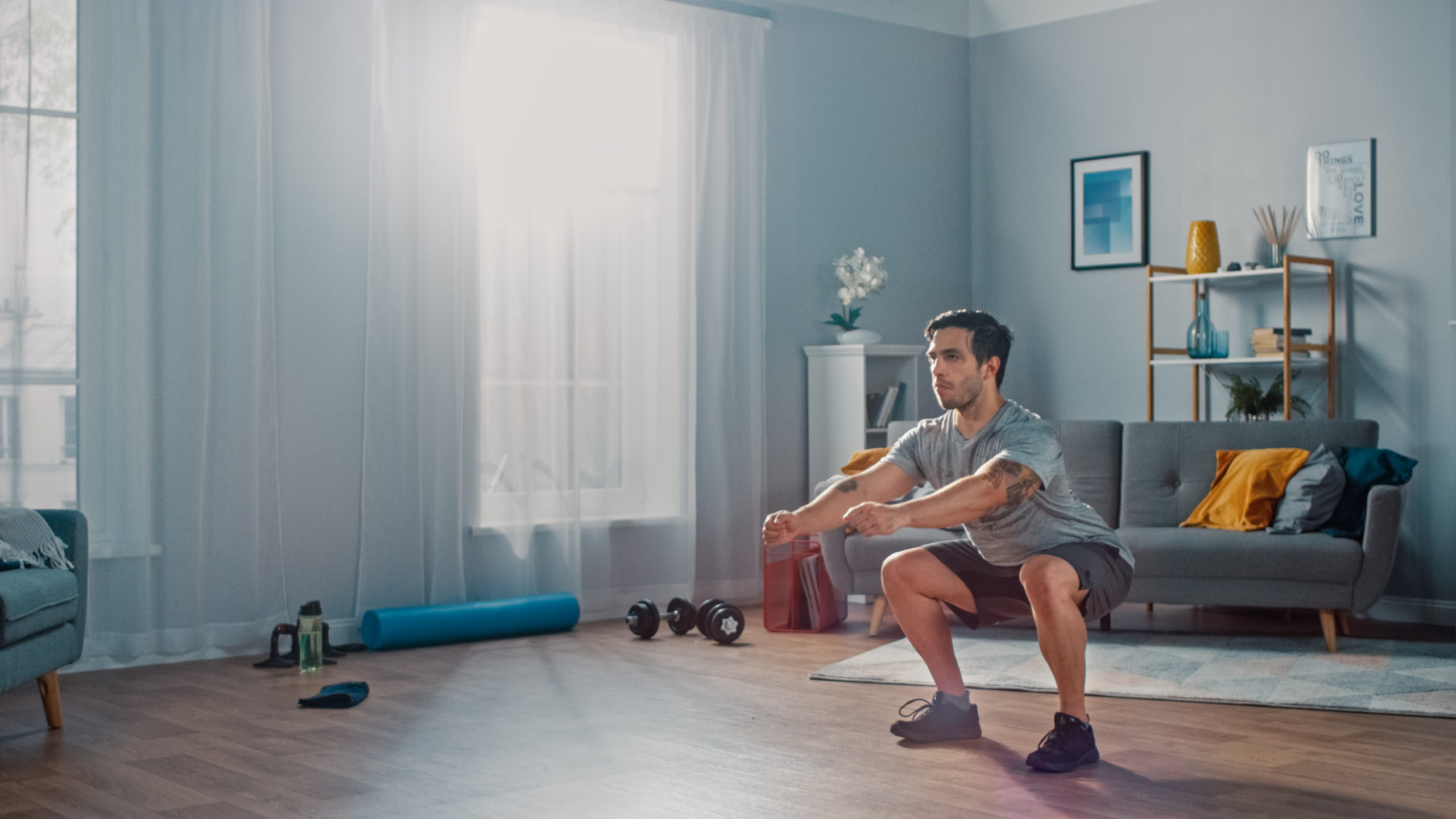Living in this busy, fast paced world, most people are under both mental and physical demands on their time. Although regular exercise can have an immediate positive effect on stress, it seems to be at the end of everyone’s priority list. Nevertheless, having a mental and physical fitness break can improve the quality of your life. Working out at home becomes convenient, and eliminates travel through traffic to a busy gym. However, the at-home set-up seems to have a negative reputation. Consequently, many people believe workouts at home are not as impactful as exercising at a gym. Today, we are going to help you dispel that myth. You may have limited equipment, but there are unlimited ways to continue to progress your exercises.
Introducing 11 ways you can make your at home workouts more challenging, to get better results without having to use a fitness facility.
To see these 11 tactics in action, navigate to this video on the Incite Coaching YouTube channel.
The human body is a master of adaptation, whatever it is asked to repeat, it will become efficient at. There are two main methods of challenging yourself with at-home exercise. Either swapping an exercise for another version or set-up, or altering the exercise to increase the intensity, duration, or density.
Swap
Swapping your exercise involves selecting a more challenging set-up or progression of a movement.
- Change the Base of Support
- Adjusting to a smaller base of support, requires more stabilizing or balance from your brain and muscles, therefore increases the challenge.
- Go Unilateral
- Altering the exercise from a 2-sided bilateral movement to a 1-sided unilateral exercise requires more from the body. As a result, increases the difficulty and effectiveness .
- Combine Movements
- Combining two or more exercises requires more coordination hence makes it more taxing.
Just as a change in the set-up and progression level can appropriately increase the challenge of your workout; similarly, altering the individual variables of a movement can help.
Alter
You can change the interactions of intensity, duration, and density in order to progress the demand on your body.
- Change Tempo
- The focus should not be on quickly finishing but slowing down the action. Decreasing the speed of the exercise or focusing on fighting gravity makes the exercise more difficult.
- Pause a Little
- Instead of using momentum to get in and out of positions, pause the movement for an extra few seconds at the most difficult point in the exercise.
- Add Volume
- A method of increasing intensity, adding volume is as easy as adding more reps (and sets). You can even calculate volume by multiplying sets by reps by load.
- Redefine the Rep
- Instead of counting each repetition, add partial repetitions in between and count that as one instead. This easily increases challenge without needing to add load.
- Reduce Rest
- Increasing the density of exercise is as simple as reducing rest time between sets, adding in active rest, or creating blocks of different exercises. Therefore you are able to do in the same amount of time.
- Vary the Range of Motion
- Changing the range of the motion of your exercise introduces more challenge. Starting the movement from a higher or lower position is a simple example.
- Add Resistance
- Adding resistance to the exercise like a band, towel, weighted bag, or an immovable object, can demand more from your body without having to use special equipment.
- Focused Muscle Squeeze
- As your muscle is engaged, you need to focus on squeezing it to it’s full potential. Which will also strengthen the muscle-mind connection.
Thinking of starting a home gym?
We would like to begin by saying, “It’s possible to find implements and items around the house to get an effective work out”. Technically we can utilize only our body to complete our workouts and get results but we maintain that procuring some of these pieces of equipment can help maximize the results and streamline the process. You can progress even when you are at home, as you’ve read above. If you want to begin without investing anything into your home gym, check out the blog article “Substitute Weights from Home” and the associated video on our YouTube Channel.
Check out the video “Ideas: For At-Home Weight Substitutes“
Before You Start…
First and foremost, you should be measuring changes, intended results, and your intensity/exertion. Use tools to measure and track the intensity of your performance, and in turn to inform your plan. It can help to decide what has worked, and what to maintain in your plan. We at Incite Coaching are going to suggest some tools which you can source to increase your success rate and to “streamline” results.
- Smart Scale – to measure body weight and fat percentage changes
- Measuring Device – to measure changes in body composition
- Heart Rate Monitor – to measure intensity of exertion
To learn more about the reasoning behind the structure of this list, and about the equipment itself, visit the blog entitled “The Tools of the Trade“
The following are suggested pieces of equipment to purchase for your home gym, but you can find related equipment online and in store.
The Essentials:
The following are tools we would suggest are essential for an at-home gym. It’s possible to use items from around the house, but if you want to start building an at-home work out space, start here:
- Adjustable Bench/Step – a platform to use for support, as a step, or for leverage
- Weighted Vest – to increase load without having to increase the weight of an implement
- Resistance Band Set – Large Loops – Various tensions to provide compact resistance, and options for “pulling” exercises
- Pull-Up Bar – though challenging as an exercise, this also acts as an anchor for bands and other tools
- Yoga Mat – most people prefer not to be directly on the floor
- Equalizer Bars – another option for “pulling” exercises but a great tool for many elevated and body-weight exercises
- Dumbbells – either a set of adjustable dumbbells or a set of weights 10+ lbs. up to at least 30 lbs. (to start)
- Skipping Rope – in order to introduce more cardio into your routines
The Upgrades (Next Level):
- Stability Ball – large ball fitted to your height to help with stability
- Kettlebells – a set of kettlebells starting at 20 lbs. or ~10 kg
- Suspension Trainer – provides more options for “pull” exercises
- Foam Pad – to provide cushion for kneeling exercises or stability challenge
“Nice to Have” – Complete Your Set-Up:
- Sliders – allow you to slide in and out of positions
- Foam Roller – for warm-up and recovery drills
- Med Ball – for cardio and plyometric drills
- Sandbag – for carries, crawls, and plyometric drills
- Resistance Band Set – Mini Bands – to add resistance to small movements or correct movement form
- Barbell – allows you to advance exercises and increase loads
- Weight Plates – the load you can add to the barbell
“Replace the Gym” – Specialty Equipment:
- Cardio Equipment
- Rower
- Assault Bike
- Treadmill
- Step Mill
- Stationary Bike
- Jacob’s Ladder
- Squat Rack/Cage
- Landmine
- Battle Rope
- Parallette Bars
- Plyo Box
If you need some more help in getting the most out of your at-home workouts, book a consultation with one of our coaches today!

